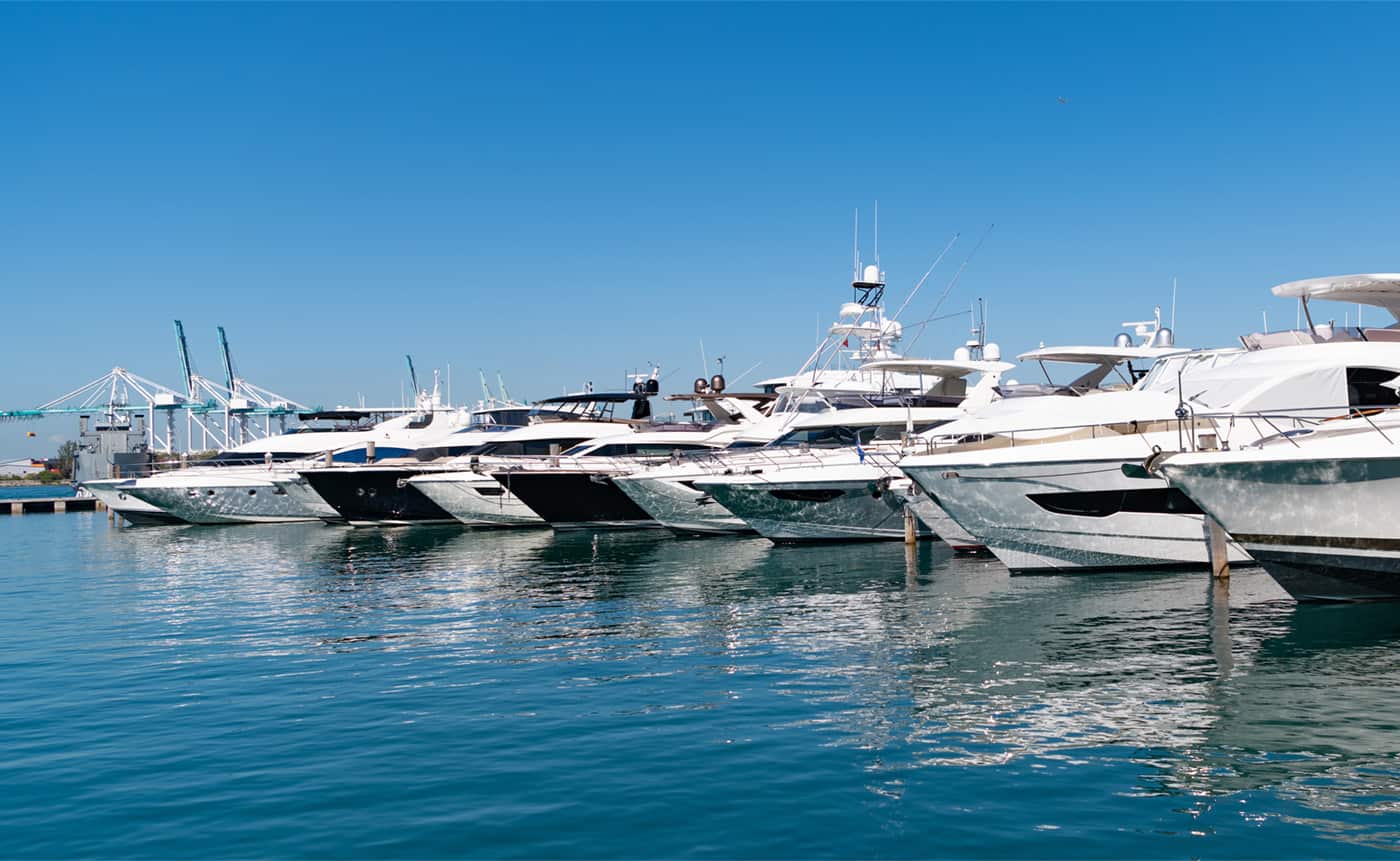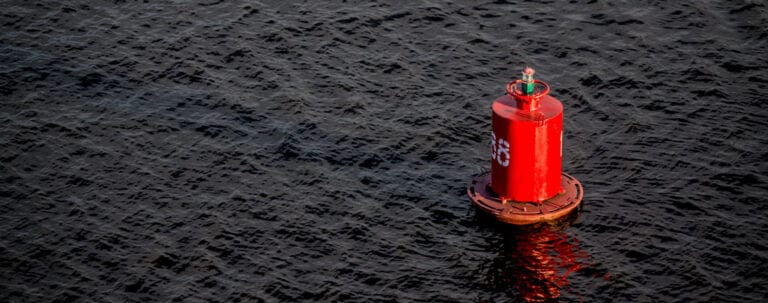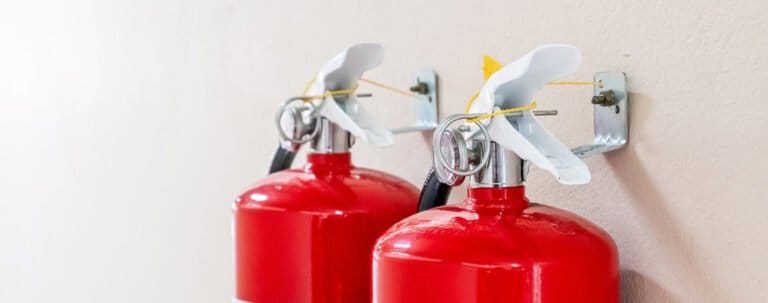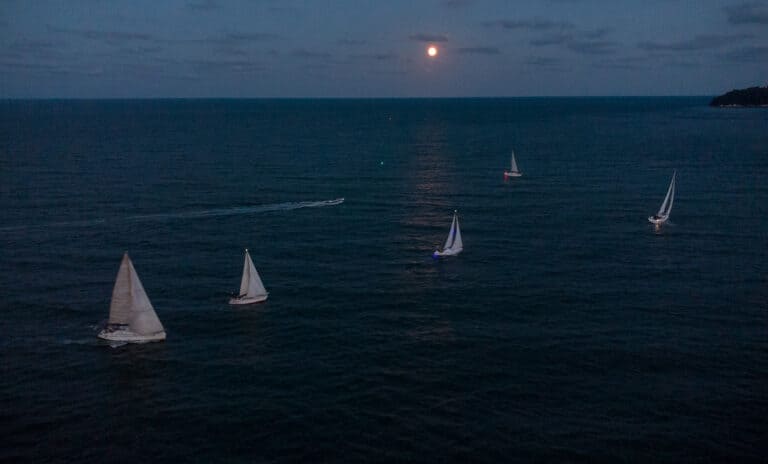Any sailor knows that docking and mooring is a difficult procedure, even in calm conditions.
Now picture the winds are high, the water is choppy, and the current is dragging you away from the dock.
Docking in adverse weather conditions is a real skill and you are unlikely to get it right the first time.
As you grow in sailing experience, you will become more proficient in your skills and docking will be simple.
What Is The Best Way To Approach A Dock When There Is A Strong Wind Or Current?
There’s a few things you must take into consideration when approaching a dock when a strong wind or current is present.
As you are beginning to approach the dock, you should slow down the speed of your boat. As you do this, secure the boat’s fenders on the side closest to the dock and prepare the docking lines.
Then consider the following…
Marina Etiquette
Many marinas are limited in terms of the number of docking stations available.
This may mean that you need to wait your turn to be able to dock.
You should be patient and not approach until you see an open docking station.
You will also need to communicate your intention to dock to any other boats that are waiting to depart.
Training Your Crew
You must train your crew in proper docking techniques.
It requires quick thinking and actions from each of the crew members and you do not have time to walk them through each step.
They should be aware that the fenders must be out on the side that you are approaching the dock on.
For example, you should be able to call out “Fenders out port side” and be assured that that will happen.
It is also a good idea to have crew members giving you distance estimates as you approach a dock.
This is similar to people helping you to reverse your car out of a tight space.
Ensure that your crew is aware of which lines have been made quickly, and that they know how to communicate this with you.
Docking Techniques
There are 2 main docking techniques – single and twin screws.
The twin-screw method utilizes shifters and throttles to dock your boat.
The major thing to be aware of here is to not use the steering when traveling at low speeds.
The single screw method often uses short bursts of power when docking.
This helps you to maintain control of your steering and the direction in which you are traveling.
You may need to add and sustain power if there is a high current or wind.
If it is blowing really hard, you may opt to reduce your windage and profile.
You can take down things to help improve aerodynamics, such as soft biminis.
Many single screw boats have a right-hand turning prop.
With enough experience, you can walk your stern to port and ease into docking.
There are many tutorials on this method that can be found on YouTube.
How do You Tell What Direction the Wind is Blowing in?
As you are approaching the marina, grab your binoculars and look towards the dock.
Look at the flagpoles and the top areas of the sailboat masts.
Take note of the direction in which the flags are pointing, as this will indicate the direction of the wind.
Look at the base of pilings as you get closer to the marina.
This will show you the direction of the current and the strength of the forces at play.
If the current is strong, you should keep the bow or stern facing into it for as long as possible.
Doing this will help you to maintain control of your vessel.
When you get inside seawalls, docks, or narrow waterways the flow of the current is likely to shift.
To combat this, you should stop the boat when you enter any of these areas.
Allow the boat to drift on the current for about 30 seconds.
Before approaching a pier or slip, use the stop, drift, and go method.
This will let you know which of the 4 main spring lines needs to be used first.
If the Wind is in Your Face
This is the ideal manner in which to dock your boat.
The wind being in this direction gives you a much greater level of control over your vessel.
Try to approach the dock at a steep angle.
Somewhere between 30 and 45 degrees is often a good amount.
As you approach, swing the boat quickly, and secure the bow.
Reverse your boat until the stern swings into the dock.
If the Wind is at Your Back
If the wind is coming from behind you, you should approach the dock at a much shallower angle.
Generally speaking, you should be aiming for between 10 and 20 degrees.
As you approach the docking station, stop the engine onboard the boat.
The wind should be able to push the boat gently towards the dock for perfect mooring.
If the Wind is Towards the Dock
If the wind is at your side, heading in the direction of the dock, you need to approach it differently again.
At a reduced speed, begin to approach the docking station.
Keep the line of your boat parallel to the dock.
If you need to alter your position, briefly shift into gear.
Otherwise, allow the current and the wind to direct your boat towards the dock.
Once close enough, secure the bow and stern lines of your boat onto the dock.
When Should You Avoid Anchoring?
You should not attempt to drop anchor (discover the boat anchors) in areas where you are aware of heavy currents.
If the seabed is littered in rocks or is very sandy, the anchor will not be particularly effective.
This is because there is unlikely to be anything for the anchor to catch on.
This means that the anchor will simply drag along the seabed and not hold your boat in position.
You should also not drop your anchor near submarine cables or sunken shipwrecks.
This is because the anchor can cause damage to the undersea obstructions, which could potentially be dangerous for you or others.
How To Approach A Dock In A Strong Wind
Here’s a handy checklist on what to do when approaching a dock in strong wind…
Approach a dock in a strong wind – Step by Step:
- As you are about to approach the dock, first slow down the speed of your boat.
- Secure the boat’s fenders on the side closest to the dock and prepare the docking lines.
- Observe marina etiquette on when and how to dock.
- Remind your crew of their training.
- Check which direction the wind is blowing.
- If the wind is in your wind face dock between 30 to 45 degrees.
- If the wind is at your back approach at a shallower angle.
- If the wind is at your side then allow the wind to push you towards the dock.
- Avoid anchoring in heavy currents.
Good luck, Captain!




